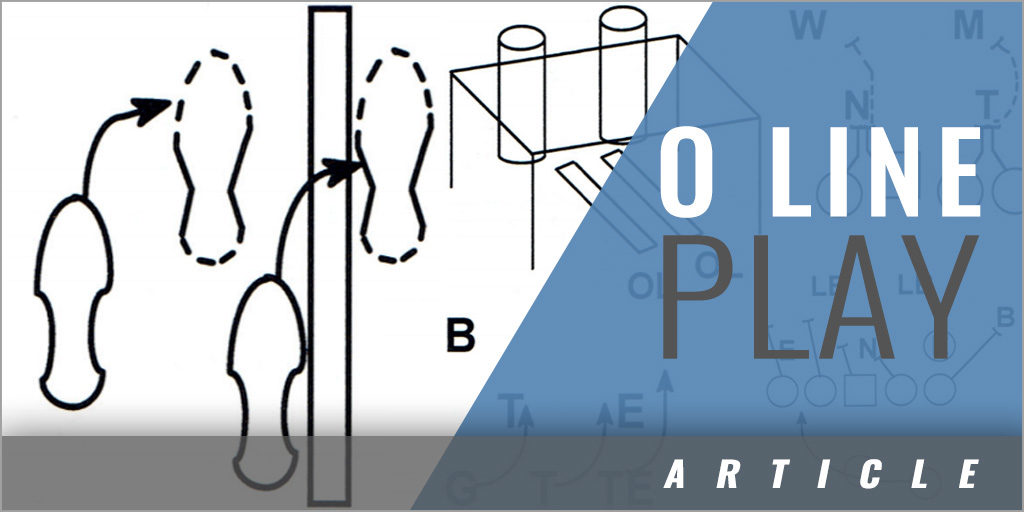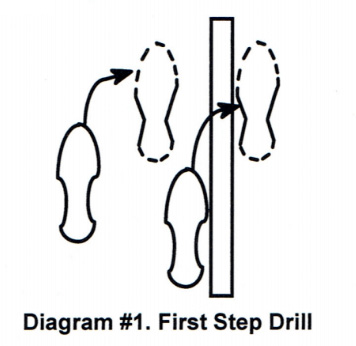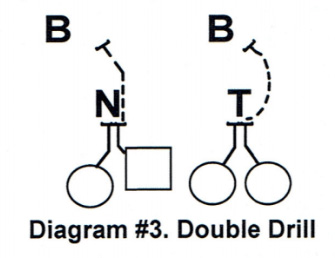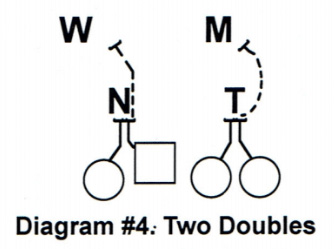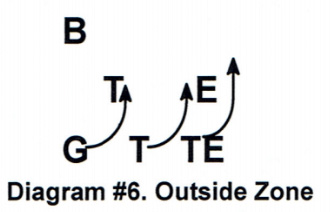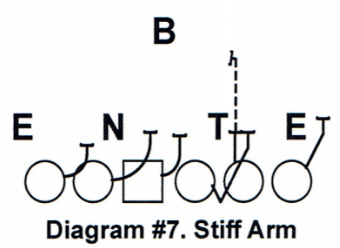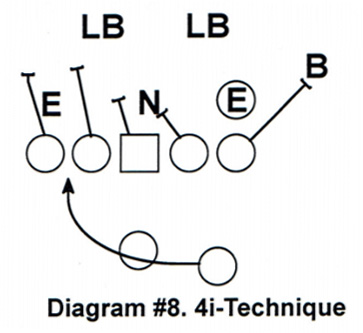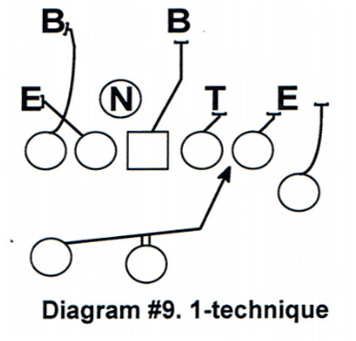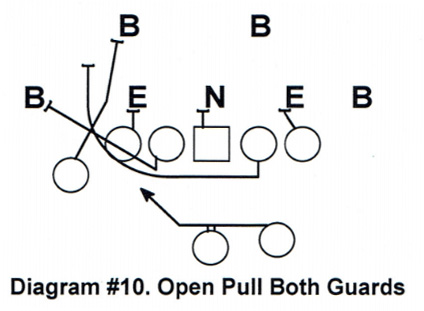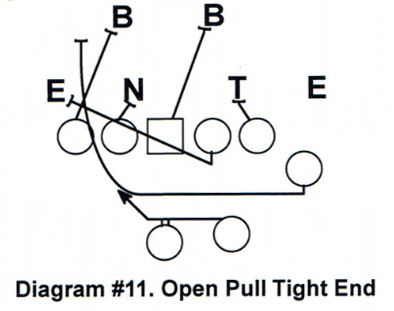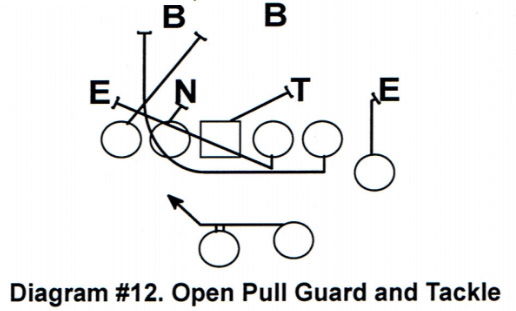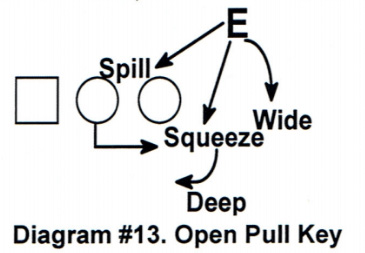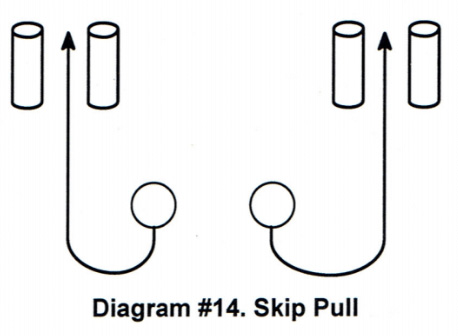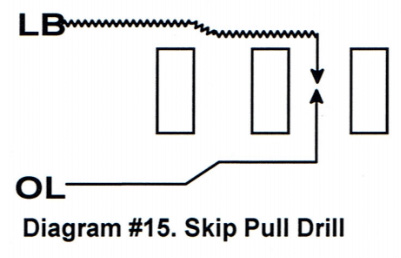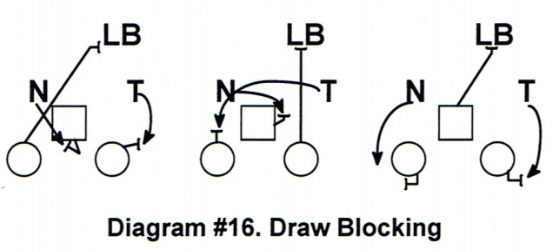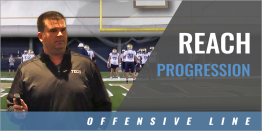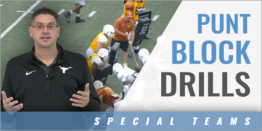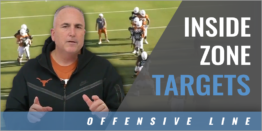|
By: Brent Key - Univ. of Alabama Originally Published in: 2018 Nike Coach of the Year Clinic Manual - by Earl Browning Provided by: Nike Coach of the Year Thank you very much. I am going to talk about the offensive line and the drills we do to teach the fundamentals and techniques. I got in this profession 17 years ago. I was a GA at Georgia Tech where I played for George O'Leary. I got out of it for a year and thought I would be a real estate salesman. I got a chance to coach again at Western Carolina where I coached the tight ends and running backs. Kent Briggs gave me a chance to get back in the game. He is here tonight, and I want to thank him for taking a chance on me. I went up there and lived in his basement. I made $10,000 for coaching. I ran up there to do it. It was a great deal, and I appreciate everything he did for me. Prior to joining the Alabama staff, I spent 11 seasons as an assistant coach at Central Florida. I linked up with my old college coach George O'Leary. I coached the offensive line for six seasons there. In the 2015 season, I became the offensive coordinator. I have been at Alabama for two seasons, and it has been exciting. I want to thank all the coaches for being here. I want to get into the real stuff. We have this creed posted in our room. Offensive Linemen Creed:
When I am trying to figure out what drills to do, I want to do something that they are not good at doing. The drills are not anything fancy. We work with cones, bags, sleds, and chutes. There is a purpose for every drill we do. Most of the drills come from something that we are not good at doing. I got this drill from Doug Marrone, who is the head coach at the Jacksonville Jaguars. He was my line coach at Georgia Tech. This is a simple chute drill. The players start under the chute with a board in front of them. They get in a bear crawl stance and on the command, they bear crawl out of the chute, get to their feet athletically, and into a dummy holder. They punch the dummy, extend, and lockout with the arms. We want them to come off the ground and be an athlete. They want to explode into the dummies and drive it back five yards. When we work the drill, we want to work from low to high and think leverage. We do a first and second step drill under the chute. (Diagram #1) We have narrow boards we use in this drill. We align with the lead foot on the board. The first step is a short six-inch step. That is why we use the narrow board to keep them from overstepping with the first step. On the command, the lineman moves the foot against the board, steps over the board, and drives out of the chute.
When we do the second step drill, we want to make sure we keep the cleats in the ground. To block someone, you must have both feet on the ground. The lineman can never be caught with one foot on the ground and one foot off the ground. That is the reason for the short choppy steps we do in all drills. We want all the cleats on both shoes in the ground. When we start the chute drills, we put the players under the chute. Then we back them up and put their heads under the chutes and their bodies out of the chute, they must run forward and stay low. We do not want to rise up out of the stance but keep the same knee bend and flat back running across the chute. Our chute is adjustable. I can raise or lower it depending on what the drill is. If we are playing with bad pad level, I will adjust the chute. If I want them to bend their knees more, I lower the chute. For linemen the size of ours, that can get painful. We do a cut drill under the chute. (Diagram #2) The linemen start in the chute using a board to run across as they move under the chute. There are two dummy holders at the other side of the chute. The dummies are offset from the board as to assimilate the defender on the outside shoulder of the linemen. They fire out of their stance on the command. They travel across the board and shoot the shoulder to the inside knee of the defender. He wants to throw and work his head up to the sky. It is not a swan dive at the dummy, but a cut block. Once they hit the ground, they spring off the ground and finish up the field.
We do not use sleds to drive up and down the field. We have stationary sleds that do not move. I want to teach them to unlock their hips and generate power. We do a punch and lockout drill against sled pads. The sled pads will go up when they lock out their arms. The thing I look for as they lockout is to make sure their feet stay on the ground. I do not want them to get on their toes. We work on the first short step and the second step, then strike. The routine is simple. Short first step and foot in the ground on the second step. On the third step, contact is made. We want a great punch as the hips unlock and go down. The arms extend up, and we lock out the elbows. When they jack the sled up, they want to continue to run the feet. Foot movement is a must in a blocking technique. In the drill, the feet may play to the side, but that is the normal way the foot is turned. That allows you to have all the cleats in the ground. If you try to block with the toes pointed down the field, you end up on your toes and not many cleats in the ground. When we teach the combo block, we start in a fitted-up position. The blocker gets hip-to-hip and foot-to-foot in a double team move. (Diagram #3) We fit them in the block, so they know what it looks and feels like. The inside blocker uses his outside hand, and the outside blocker uses his inside hand on the defender. They use short choppy steps, and they walk the defender back.
I do not think there is a big difference in playing on the left side or the right side of the ball. I do not think there is a big difference in playing tackle or guard. There is not a hell of a lot of difference in playing front side and backside. They learn the skills of scooping going either way. They learn how to drive block and reach block with either shoulder. We believe the offensive linemen are interchangeable. We take the best five linemen and play them together. The center is a little bit different because he must snap the ball and block. That is a difficult task. Whatever combination we are not good at is the one we are going to work. When we work on the double team, we use three, four, and five men drills. This drill is a four-man drill with the two guards, center, and play side tackle. (Diagram #4) The defense has two linebackers and two down techniques. We are working on two double teams working to the linebackers. When the guard sets his outside foot, he wants to play with a high inside leg to that side. We want to come fast and hard with the punch to the inside number of the defender. The only time he would use a lateral step is if the defender was head up and slanted inside. When he comes off on the 3-technique defender, he is working to the inside number with a high outside leg. The tackle is working with the inside leg with his hand and shoulder on the outside number. We want to vertically drive the defender off the ball and into the linebacker.
When the guard has a high outside leg, he has his inside foot behind him as the power step. I am a big believer in getting the job done. We must coach technique, but there must be a maximum effort in blocking. Their technique will get better as the year goes on, but they must get the job done. I made a mistake in my thinking about coaching the offensive line. I thought I had to know everything there was about the offensive line. In the Auburn game this year, when I walked into the locker room at halftime, our guys were down. I told them if they do four things we will win the national championship. I told them to get their hands inside, get the second step on the ground, play low to high, and finish blocks. We went back to the one basic and played so much better. Those four fundamental things will lead to the success of the offensive line. If we are in a gap scheme or double zone team, I want to get as tight to the line of scrimmage as I can get. I do not want the defender to have time to do anything. If we are going to run an outside zone or play-action pass, I am going to get as far off the ball as I can get. In practice to get more reps, we work in pods. (Diagram #5) In the first pod, we work on passing off a twist stunt by two linemen.
In the second pod, we work on a two-man double team, and in the third pod, we work on two double teams. Those are the combinations we use with the inside zone play. On inside plays, the target is the play side number of the defender. When we work outside plays the target is the outside armpit of the defender. When we run the outside zone, the linemen cannot block for the running back. They block, and the running back picks where he is going with the ball. Outside zone blocking is simple. (Diagram #6) The blocker is trying to get to the outside armpit of the defender. He wants to try to square his shoulders and run up the field. If he cannot get vertical up the field, he pushes the defender to the sideline.
A technique we use to help the backside linemen to get on his block is the straight-arm with the backside hand of the front side blocker. (Diagram #7) The offensive tackle with a 3-technique inside of him is going to stiff arm the 3-technique. He is not blocking him. He is holding him up to allow the play side guard can get to his outside. The tackle is going up to the linebacker.
He uses the hand shiver to stop the penetration by the 3-technique. The guard is bucket stepping behind the play side tackle and coming up on the outside armpit of the 3-technique. We use the same technique between the center and backside guard. The center stiff arms the 1-technique to keep him on the line of scrimmage and slow him down from getting to the outside. The guard is scooping under the center and coming up on the 1-technique outside armpit. The center comes up on the backside linebacker. When we watch the game film from the previous game, we want to work on all our mistakes. Whatever we did a poor job on, we work it all week to correct the mistakes. If you do not, you will see nothing but that in the next game. If you did not handle the twist, you could bet that is going to show up in the next game. This year we had teams playing an odd-man front and moving the defensive end into a 4i-technique instead of 5-techniques. (Diagram #8)
It made it tough to run against those techniques. What we did was isolate the backside defensive end and read him. The tackle could not get inside of him. He false pulled to the outside and blocked the outside linebacker. The quarterback read the defensive end and handed off or kept it. We run the same play for the 1-technique defender. (Diagram #9)
On the backside, we used a switch pattern between the backside guard and tackle. The guard blocked out on the 5-technique defender, and the tackle went up on the backside linebacker. We ran the outside zone play to the front side and read the 1-technique for the pull or give. We use both types of pull techniques. We use the skip pull and the open pull. We do a lot of these pulls. We run a lot of counters. When we play odd front teams, we are going to pull the uncovered linemen. In the diagram, we pull both guards. The play side guard kick out and the backside guard turns up inside the kick out block. These are examples of open pulls. The offensive line gets all the grief when things do not work. We are not the only players on the field that block. The wideouts and running backs must do something besides run and catch the ball. The same thing goes for the quarterback on his play action pass and read plays. He must read the play properly. or the linemen look stupid. In the run game, everyone must do his or her job, for a play to work. We can block the play perfectly, and the back falls. That has happened on more than one occasion. Everyone in our line can open pull and skip pull. We train them all on those techniques. We do that because we play so many odd-front defenses these days. On this pull, we pull both guards. (Diagram #10) The first guard is the kick out the block and the second guard turns up. Everything on this play is based on whether the center can reach the nose.
We can also open pull with the guard and tight end. (Diagram #11) With the end or a tight wing outside the tackle or in a sniffer position behind the tackle, he is the second puller. This is a good weakside run. If you bring motion through the backfield and run it the other way, it can be a productive play for you.
Another way we run the counter is to pull the guard and tackle off the backside. (Diagram #12) The tight end blocks the backside end to keep him out of the play. The hard block is the center. He must come flat to the line to cut off the 3-technique defender. The guard kicks out, and the tackle turns up.
The kick out block will face many techniques from the defense. (Diagram #13) The defender plays different techniques to make the kick out blocker use his eyes. We had the defender do four things. He played normal and came across the line of scrimmage, which is the easiest play. We had him rush up the field as to contain the quarterback, which the guard turns up inside and goes to the next defender. We had the defender squeeze and made the guard root him out of the hole. The last thing we had him do was spill the guard. The guard logs him to the inside, and we go outside.
We teach the skip pull to everyone on the offensive line. (Diagram #14) We have several ways to teach and practice the pull. We use bags for them to run between them as they work their pull.
In the skip pull, the puller wants to keep his shoulders square to the line of scrimmage at all time. That way he can immediately insert into the line if he gets a linebacker blitz. One way we drill the skip pull is to align several bags on the ground. (Diagram #15) The linebacker plays on one side, and the offensive lineman is on the other. The play starts, and the lineman uses his skip pull technique. The linebacker pursues down the line. He can turn up in the first hole, second hole, or third hole.
The skip pull lineman must run keying the linebacker. When the linebacker turns up into a hole, the linemen attack the linebacker in that hole. The key on the skip pull is to keep the shoulders square to the line of scrimmage. We put the skip puller in with his head under the edge of the chute. He skips around the outside of the chute and blocks the bag holder. What this does is hinder the lineman vision. He must focus on finding the defender. We got a lot of miles out of the draw this year. We work the draw play blocking once a week. (Diagram #16) When we run the draw, it is generally in a passing situation. The guards and the center cannot expect the two defenders to play straight gap techniques. The will loop, slant, and twist their charges. We work on getting one of the three blockers out on the linebacker.
I appreciate all of you being here. Come see us. Thank you. |
